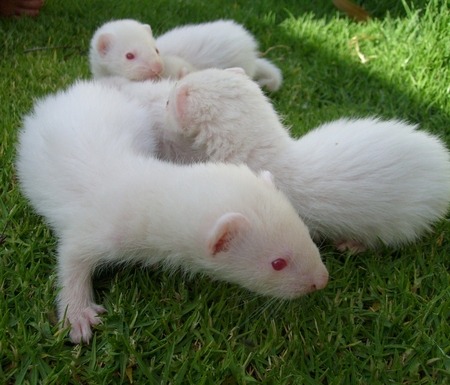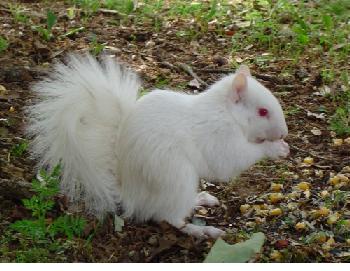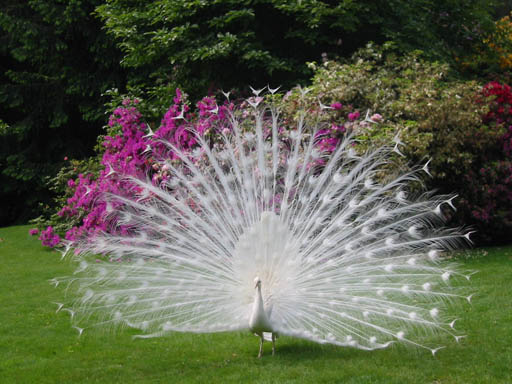|
|
|---|
Thursday, June 24, 2010
Tasmanian Tigers are sometimes called Tasmanian Wolves, which is confusing, because how can an animal be both a tiger and a wolf? And what's even more confusing is that the Tasmanian Tiger isn't really a tiger or a wolf either one. And if you want my opinion, it was all this confusion that helped make this poor animal extinct!
Anyway, maybe the easiest thing to call the Tasmanian Tiger is a thylacine, which is short for Thylacinus cynocephalus. This is Greek, and it means "one with a pouch and a wolf's head." So what the thylacine really is -- or was -- was a marsupial. Because a marsupial is an animal that has a pouch that its babies live in until they are big enough to live outside the pouch. Kangaroos are also marsupials, and so are opossums. Oh, and guess what! The male thylacines have pouches, too, and they use them to keep their boy parts safe until they need to use them.
A long time ago, thylacines lived in Australia, Tasmania, and New Guinea. The last place where they were seen alive was in Tasmania, which is an island that is also a state of Australia. And just in case you have forgotten your geography lessons, here's a map that shows Tasmania as that orange spot down at the bottom.
Thylacines looked sort of like dogs with thick tails, but they had a stiff gait, and they couldn't run fast, like dogs. But if they were excited or trying to get someplace in a hurry, they could stand up on their back legs and jump, sort of like kangaroos. If you measured thylacines from their noses to the tips of their tails, they could be about 6 feet long, and they were about two feet tall. They weighed between 40 and 70 pounds. Also they had these interesting dark stripes across their backs, and that's why people thought they looked kind of like tigers.
People didn't see thylacines too often because thylacines mostly liked to hunt at night. And what they ate was lots of meat and no veggies at all. The meat they liked best was stuff like kangaroos, wallabies, wombats, birds, and possums. They especially liked a bird called the Tasmanian emu, but that bird started becoming extinct about the same time as the thylacines did.
Baby thylacines were called joeys, and usually there would be 3 of them in a litter. These three little joeys were tiny and hairless when they were born, but they crawled into their mom's pouch and latched onto a teat. As they grew, the mom's pouch got bigger and bigger, until it almost dragged on the ground. Then the babies would come out and learn how to get along in the world for themselves.
Thylacines started going extinct in New Guinea and Australia about 2000 years ago. This might have been partly because of the people and the dingoes there, because all of them were hunting for the same food. But on Tasmania, there were still thylacines until the 1930s. When Europeans started settling in the area, they thought that Tasmanian tigers were killing their sheep and chickens. Which may have been true, but it also may not have been true because the thylacines hunted at night, and no one saw them very often.
Anyway, the settlers wanted to get rid of the thylacines, and there was a bounty for every animal that could be killed and brought in. So lots of people shot thylacines so they could get the bounty money.
The last known living thylacine was "Benjamin," who lived in the Hobart Zoo in Tasmania. "Benjamin" might really have been a female, but no one knows for sure now. If you want to see a film that was taken of the last few thylacines living in zoos, you can go to this Wikipedia page and scroll down partway.
Anyway, "Benjamin" lived in the zoo for 3 years, and then died on September 7, 1936. After that, people have been looking for another thylacine, and sometimes they think they've seen one, but they can't really prove it. And when 1986 came, and nobody had seen a thylacine for 50 years, the animal was declared "possibly extinct." Some people are trying to maybe clone one from DNA, but so far they have not had much luck.
Anyway, "Benjamin" lived in the zoo for 3 years, and then died on September 7, 1936. After that, people have been looking for another thylacine, and sometimes they think they've seen one, but they can't really prove it. And when 1986 came, and nobody had seen a thylacine for 50 years, the animal was declared "possibly extinct." Some people are trying to maybe clone one from DNA, but so far they have not had much luck.
So that is the sad story of the thylacine. I wish they weren't extinct because they look like they might be fun to play with, but I guess I'll never know for sure.
0 Comments:
Subscribe to:
Post Comments (Atom)










.jpg)










